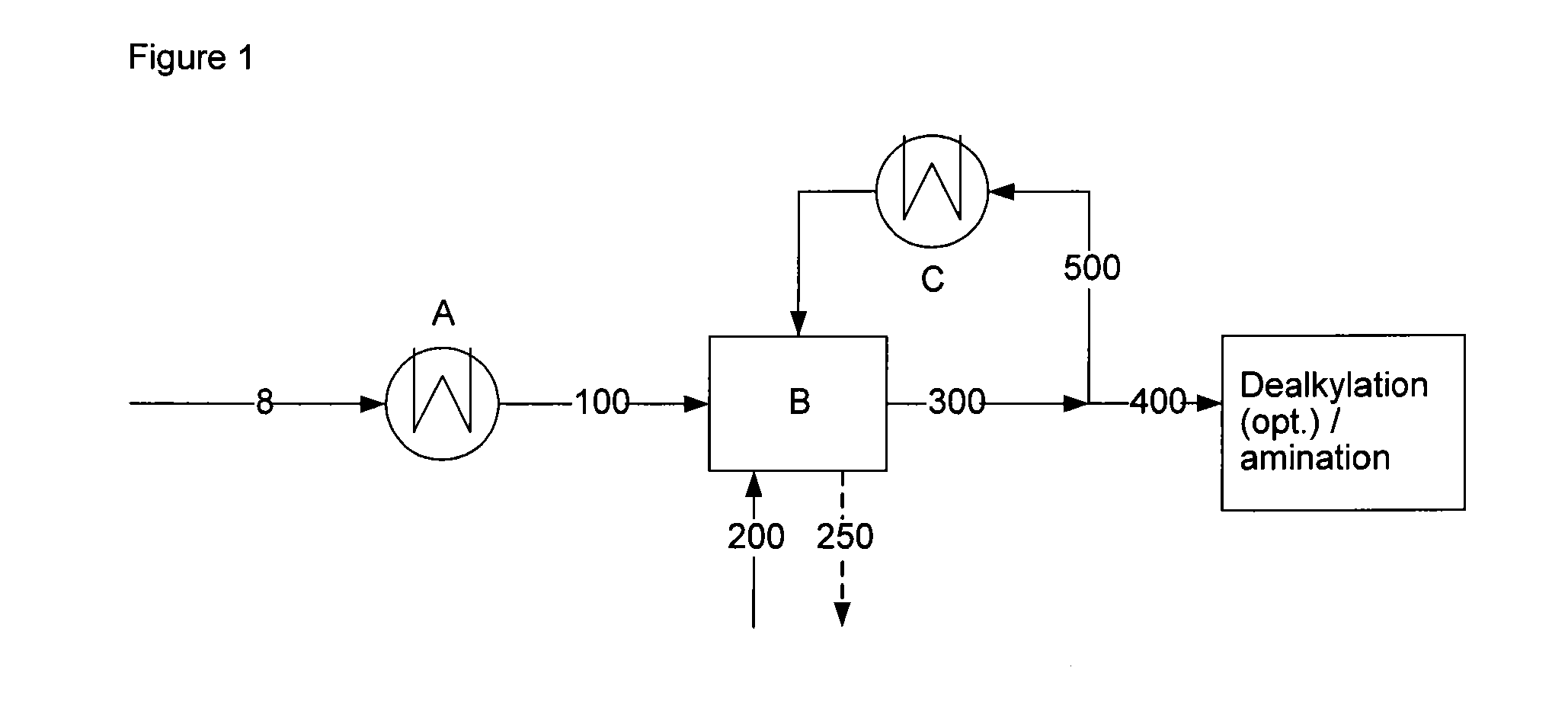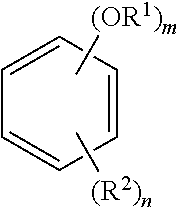Process for preparing polyisocyanates from biomass
- Summary
- Abstract
- Description
- Claims
- Application Information
AI Technical Summary
Benefits of technology
Problems solved by technology
Method used
Image
Examples
Embodiment Construction
[0064]For the purposes of the present patent application, the term “biomass” refers to a plant material of nonfossil origin. Biomass includes plants and plant parts which have died off, e.g. dead wood, straw, leaves, etc. The term biomass also comprises products in which a plant material of nonfossil origin has been subjected to a chemical and / or physical treatment. Such products include in particular the products from the digestion and fractionation of lignocellulose, e.g. lignin. Biomass specifically does not include coal, petroleum, natural gas, peat and upgrading products thereof, e.g. coke.
[0065]For the purposes of the invention, the expression “oxyaromatics” refers to aromatics having at least one hydroxy group and / or at least one alkoxy group per molecule. Accordingly, an “oxyaromatics composition” is a composition comprising oxyaromatics. Preferred oxyaromatics are monocyclic aromatics or compositions having a high content of monocyclic aromatics. The oxyaromatics compositio...
PUM
| Property | Measurement | Unit |
|---|---|---|
| Temperature | aaaaa | aaaaa |
| Temperature | aaaaa | aaaaa |
| Percent by mass | aaaaa | aaaaa |
Abstract
Description
Claims
Application Information
 Login to View More
Login to View More - R&D Engineer
- R&D Manager
- IP Professional
- Industry Leading Data Capabilities
- Powerful AI technology
- Patent DNA Extraction
Browse by: Latest US Patents, China's latest patents, Technical Efficacy Thesaurus, Application Domain, Technology Topic, Popular Technical Reports.
© 2024 PatSnap. All rights reserved.Legal|Privacy policy|Modern Slavery Act Transparency Statement|Sitemap|About US| Contact US: help@patsnap.com










